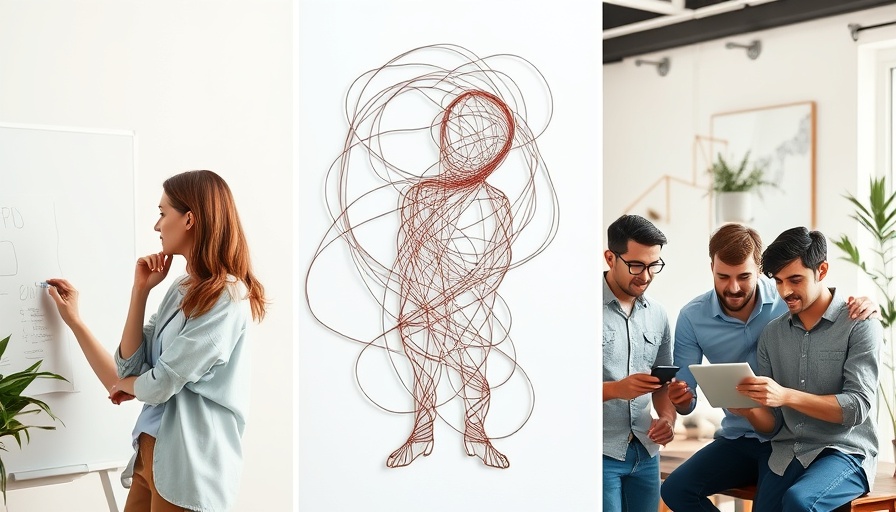
Understanding Enneagram Six: The Anxiety-Driven Personality
The Enneagram is a framework of nine personality types, each representing unique motivations and fears. Among these types, Enneagram Six, known as the Loyalist, embodies characteristics shaped significantly by anxiety and the need for security. This personality type often grapples with an underlying fear of being unprepared for life's challenges, leading to heightened anxiety and stress. By exploring the subtypes of Enneagram Six, we can not only deepen our understanding of this intriguing personality type but also uncover valuable insights into the mental health implications associated with these traits.
What Are the Subtypes of Enneagram Six?
Enneagram Six is categorized into three distinct subtypes based on their instinctual variants: the Six with a Sexual (or One-to-One) instinct, the Six with a Social instinct, and the Six with a Self-Preservation instinct. Each of these subtypes manifests anxiety in different ways and interacts with the world through unique lenses.
The Sexual Six tends to seek intimacy and connection, often fearing abandonment in relationships. Their anxiety can lead to over-dependence or clinginess. Meanwhile, the Social Six often navigates group dynamics with a defensive posture, emphasizing loyalty to community while battling inner fears related to being unsupported. Lastly, the Self-Preservation Six focuses on survival needs, managing anxiety through practical means yet often experiences stress related to physical and financial security.
The Connection Between Enneagram Six and Mental Health
Understanding the subtypes of Enneagram Six isn't merely an intellectual exercise; it has profound implications for mental health awareness and support. Given their susceptibility to anxiety disorders such as Generalized Anxiety Disorder (GAD) and Social Anxiety, the insights gained from recognizing these traits can inform effective coping strategies and treatment plans. Mental health professionals can tailor cognitive behavioral therapy approaches that resonate with each subtype’s specific fears and motivations, ultimately aiding in stress management and relaxation techniques.
How Enneagram Six Traits Can Shape Anxiety Symptoms
Each Enneagram Six subtype showcases unique coping mechanisms and triggers when faced with anxiety. The Sexual Six may experience anxiety symptoms manifesting as intense fear of isolation, leading to unhealthy relationship patterns. Conversely, the Social Six often feels overwhelmed in social settings, potentially triggering panic attacks in unfamiliar environments where their support systems are absent. Understanding these nuances provides a window into not only managing anxiety symptoms but also fostering supportive environments in schools and workplaces, contributing to broader mental health education.
Community Outreach: Importance of Support Groups for Enneagram Six
Community support plays a crucial role in managing mental health challenges faced by Enneagram Six individuals. The development of supportive networks through counseling and peer support initiatives fosters a sense of belonging, crucial for combating the stigma attached to anxiety disorders. During economically challenging times, such as those prompted by COVID-19, the value of community and shared understanding becomes even more apparent. Enneagram Six individuals often thrive in environments where there are open discussions about emotions and mental health, presence of empathy, and collective problem-solving.
Taking Action: Mindfulness and Self-Care Strategies
Anxiety management for Enneagram Six can greatly benefit from a focus on mindfulness and self-care techniques. Practicing relaxation methods such as meditation, yoga, or even engaging in creative outlets like art therapy can be profoundly healing. Staying mindful of one’s feelings and proactively addressing them can reduce the overall stress burden. Furthermore, establishing a self-care routine that integrates relaxation techniques and exercise can enhance emotional resilience, equipping individuals to better cope with triggers associated with their Enneagram subtype.
Understanding Cultural Nuances and Holistic Approaches
Cultural considerations are paramount when discussing mental health. Different backgrounds may influence how anxiety is perceived and addressed. Integrating traditional healing methods or holistic approaches alongside contemporary therapies can create a more inclusive framework for those struggling with anxiety related to their Enneagram Six traits. Recognizing and respecting individual experiences allows practitioners to offer tailored support, ultimately enhancing recovery and resilience.
Conclusion: Embracing Your Enneagram Six Path
As we delve into the layers of the Enneagram Six subtypes, we uncover not only the intricacies of personality but also vital strategies for managing anxiety and fostering emotional well-being. Recognizing one’s subtype can lead to informed decisions about seeking help, joining support groups, and adopting practical self-care practices. By embracing their inherent motivations and fears, members of Enneagram Six can navigate their challenges with compassion and resilience.
For those seeking support, remember that help is available. Engage in community outreach programs, participate in local support groups, or reach out to mental health professionals who can guide you on your journey toward mental wellness.
 Add Row
Add Row  Add
Add 




Write A Comment